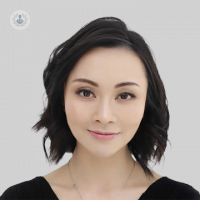IV therapy: All you need to know
Written in association with:Stress levels and the subsequent demand for IV therapy are on the rise. This treatment boosts energy and immune response.
While the concept of IV therapy in a specifically-designed clinic may be new to some, its origins go back centuries and it’s used in hospitals on a regular basis.
Leading advanced aesthetic medicine specialist Dr Tracy Xu tells us all about IV therapy and IV vitamin clinics, benefits of this treatment and how its administered – and more - in this informative article.

What is intravenous nutrition (IV) therapy?
IV therapy, which is also known as intravenous therapy, directly infuses hydration and nutrients into the bloodstream. It ensures the body receives them immediately, and unlike supplementation that’s taken orally, this method circumvents the digestive system. This means that the absorption rate of the hydration and nutrients is between 90 to 100 per cent. In comparison, oral intake is reported to only result in an absorption rate of 20 to 50 per cent.
What’s the history of IV therapy?
IV therapy can be traced back to the 1600s, when medical professionals first attempted intravenous medicine. Originally it was sidelines due to hygiene concerns in unsanitary conditions, but in World War I it became a key method of treatment.
In the 1960s, Dr John Meyer was famed for innovating IV therapy with vitamins and minerals, shaping the IV therapy method we know today.
How is IV therapy used?
There are various ways IV therapy is utilised, including:
- Alleviation of hangovers
- Athletic recovery support
- Immunity boosts
- Cold and flu symptom relief
- Addressing issues with inflammation, digestion and fatigue
Who is IV therapy suitable for?
IV therapy was initially intended for hospital patients who were dehydrated or had nutrient deficiencies. However, non-hospital patients who are generally healthy but looking to improve their well-being and immune system can also take advantage of the benefits of IV therapy offered in specially-tailored clinics like Peonia Medical.
Therapy tailored to specific needs
IV therapies such as the Myers Cocktail IV and the Immunity Booster IV are popular choices for clients looking for enhanced energy and immunity.
What’s involved in IV therapy?
Initially, clients undergo a medical evaluation before treatment. This could include a blood test, which determines nutrient requirements.
Next, a trained doctor or nurse inserts an IV catheter and the process begins. The duration varies based on the type of IV therapy that’s chosen.
What are the different types of IV therapy?
The two main forms of IV therapy are IV Push and IV Drip. They are different due to the length of treatment and fluid volume. Both guarantee 90 to 100 per cent vitamin absorption.
IV Drip
This is a slow infusion into the bloodstream via a catheter. It lasts between 45 to 60 minutes, and the average fluid injection is 250 to 1000 millilitres.
IV Push
An IV Push is a form of IV therapy that’s administered slowly into a vein using an existing catheter. It takes around 15 to 20 minutes using a 30 to 60 millilitre fluid injection.
What are the ingredients of an IV drip?
The content of an IV drip varies based on treatment. However, it typically includes:
- Saline or glucose solutions
- Nutrients like vitamins, minerals and amino acids
- In hospital settings, IV drips can contain medications, blood products or contrast agents
- IV vitamin combinations often include Vitamin C, different B vitamins, magnesium, calcium and zinc. Also, other antioxidants like glutathione can be an ingredient.
What are the benefits of IV therapy?
The main benefits of IV therapy are its effectiveness and lack of gastrointestinal side effects. Other advantages include:
- Enhanced mood
- Better energy
- Improved immunity
- Better sleep patterns
- Hangover relief
- Improved complexion
How long do the effects of IV therapy last?
Full impact of IV therapy is usually felt within 12 to 24 hours post infusion. It can last anywhere from 8 days to three weeks, based on the specific treatment provided and the individual.
What other considerations should be made about IV therapy?
The price range of IV therapy start at £50 and go up to £400 per session, with most treatments costing between £150-£250.
Safety
IV therapy is generally safe. However, it’s important to consult your primary healthcare provider before a session. Further to this, ensure that your chosen clinic follows all safety protocols like pre-treatment assessments to maintaining a sterile environment.
Also, it’s good to ask questions, research the clinic and ensure staff are qualified medical personnel. Put your safety first, every time.
If you’re considering IV therapy and its benefits, arrange a consultation with Dr Xu via her Top Doctors profile.


